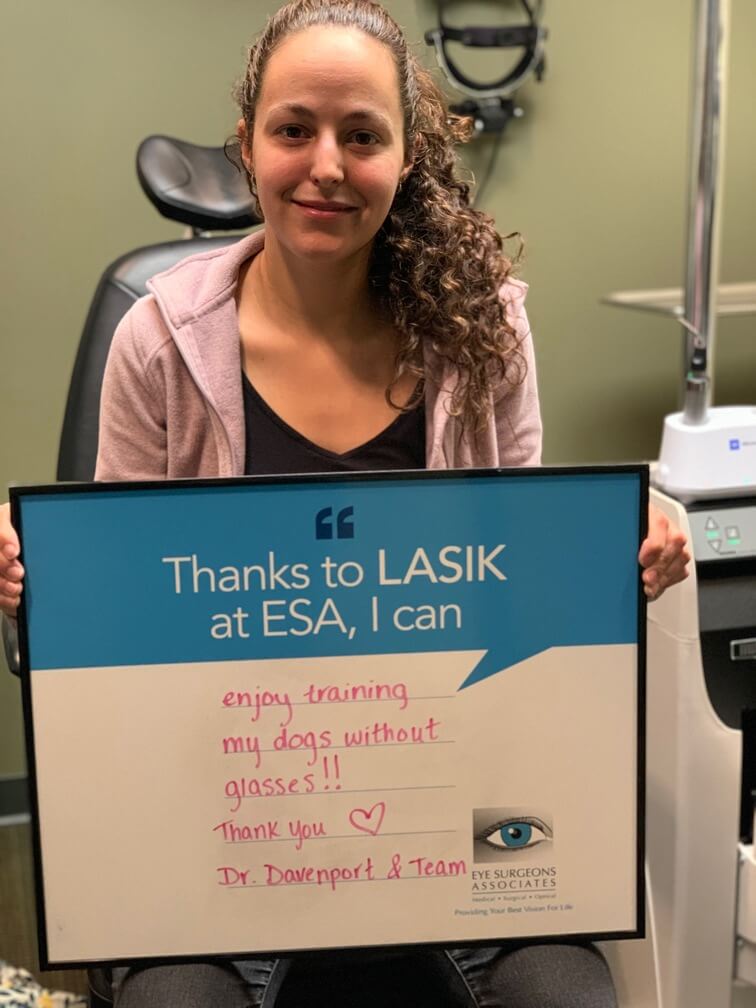LASIK
Lasik Eye Surgeon in Illinois and Iowa

What is LASIK and who is it for?
If you are between the ages of 18 and 55, with health eyes, and a stable prescription, consider LASIK – a safe and effective procedure that can improve vision by correcting nearsightedness, farsightedness, or astigmatism.
LASIK reshapes the cornea, which is the clear tissue at the front of the eye, using a precise laser. Reshaping the cornea allows light entering the eye to be properly focused on the retina, leading to clear vision without glasses or contacts.
Did you know? Since LASIK was FDA approved in 1999, more than 20 million procedures have been performed in the U.S. LASIK has one of the highest patient satisfaction rates of any elective procedure!
Find out if you’re a candidate: Take our FREE LASIK self-evaluation test or Schedule your Free LASIK Consultation
Real People, Real Results
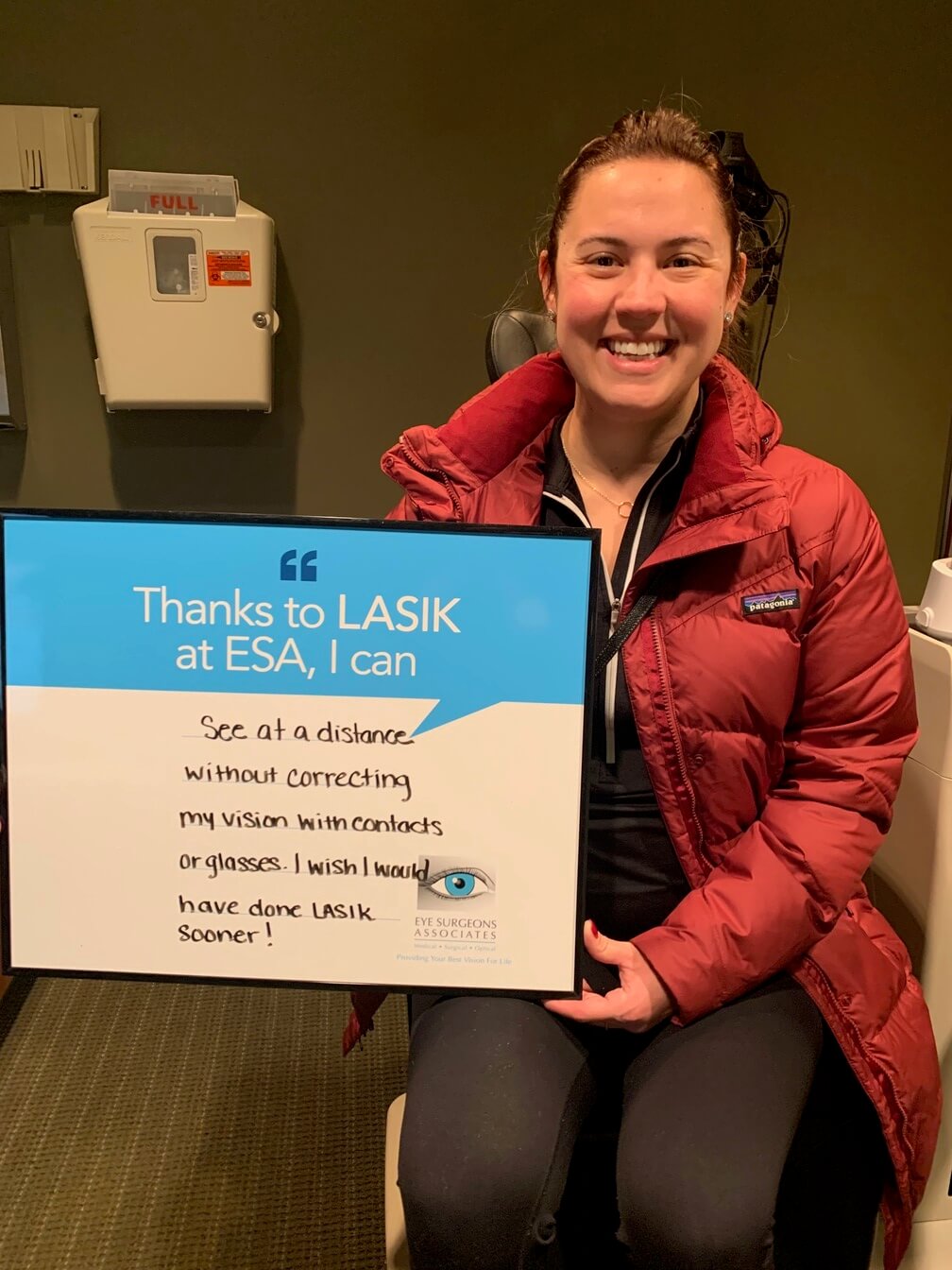
Allison, Port Byron, IL
Dr. Davenport was my LASIK surgeon at Eye Surgeons Associates. I could not have asked for a better experience. Dr. Davenport took his time to explain in detail how the surgery would go. He gave me ample time for questions/concerns. The day I went home from surgery, Dr. Davenport called me to see how I was doing. I had a wonderful experience and now have 20/15 vision because of LASIK and the great care I was given by Dr. Davenport and his team. The nurses also deserve a shout out at how patient and caring they were through the whole process. I felt like I was in great hands the entirety of this LASIK process. The only regret I have is not doing this sooner! Schedule with Dr. Davenport, you will not be disappointed.
Natalie, Davenport, IA
Received Lasik treatment from ESA. First and foremost the staff is absolutely wonderful! Each exam I had I was greeted and taken care of with the kind of staff you wish you could be around always! Dr. Davenport is so kind and fun he even personally left me a voicemail checking in to make sure I was ok, which as a busy dr. is not expected. I noticed today the little smile sticker on the eye machine and had a little chuckle. If you want a place that makes you feel like treatment is top priority, you don’t need to look anywhere else!
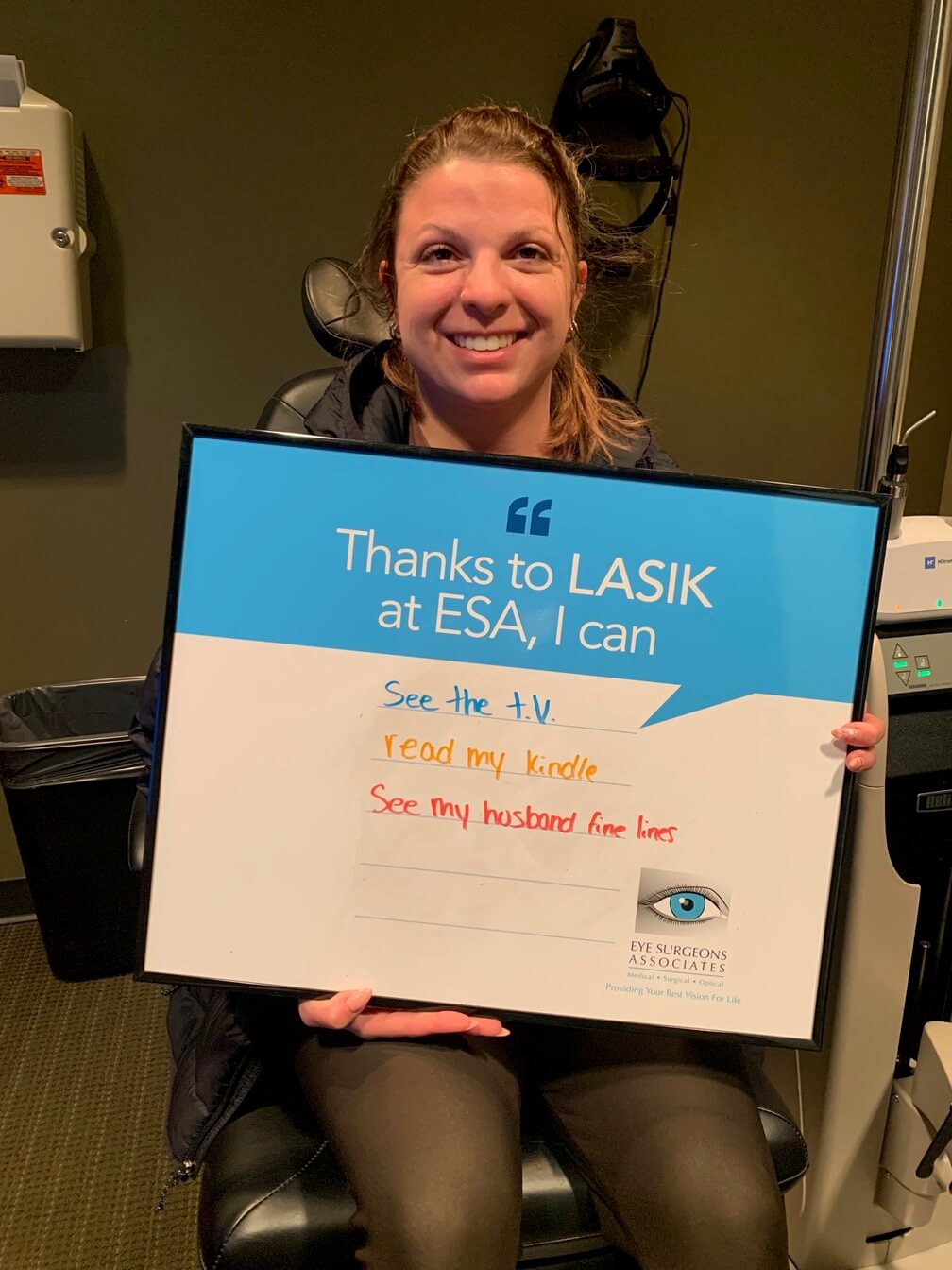
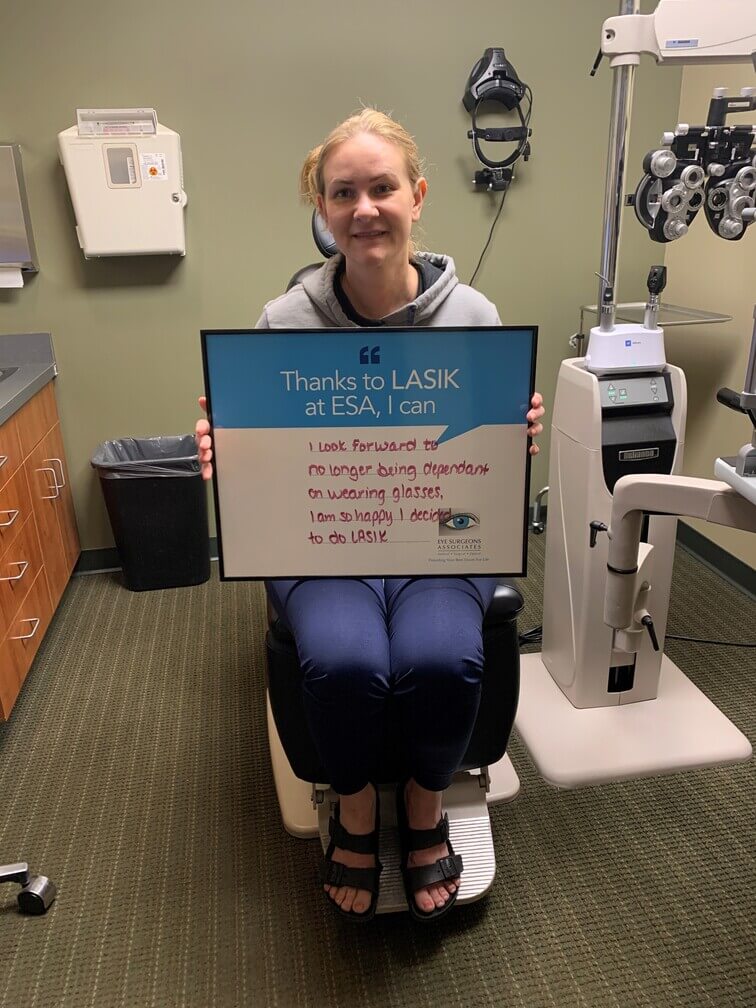
Stacy
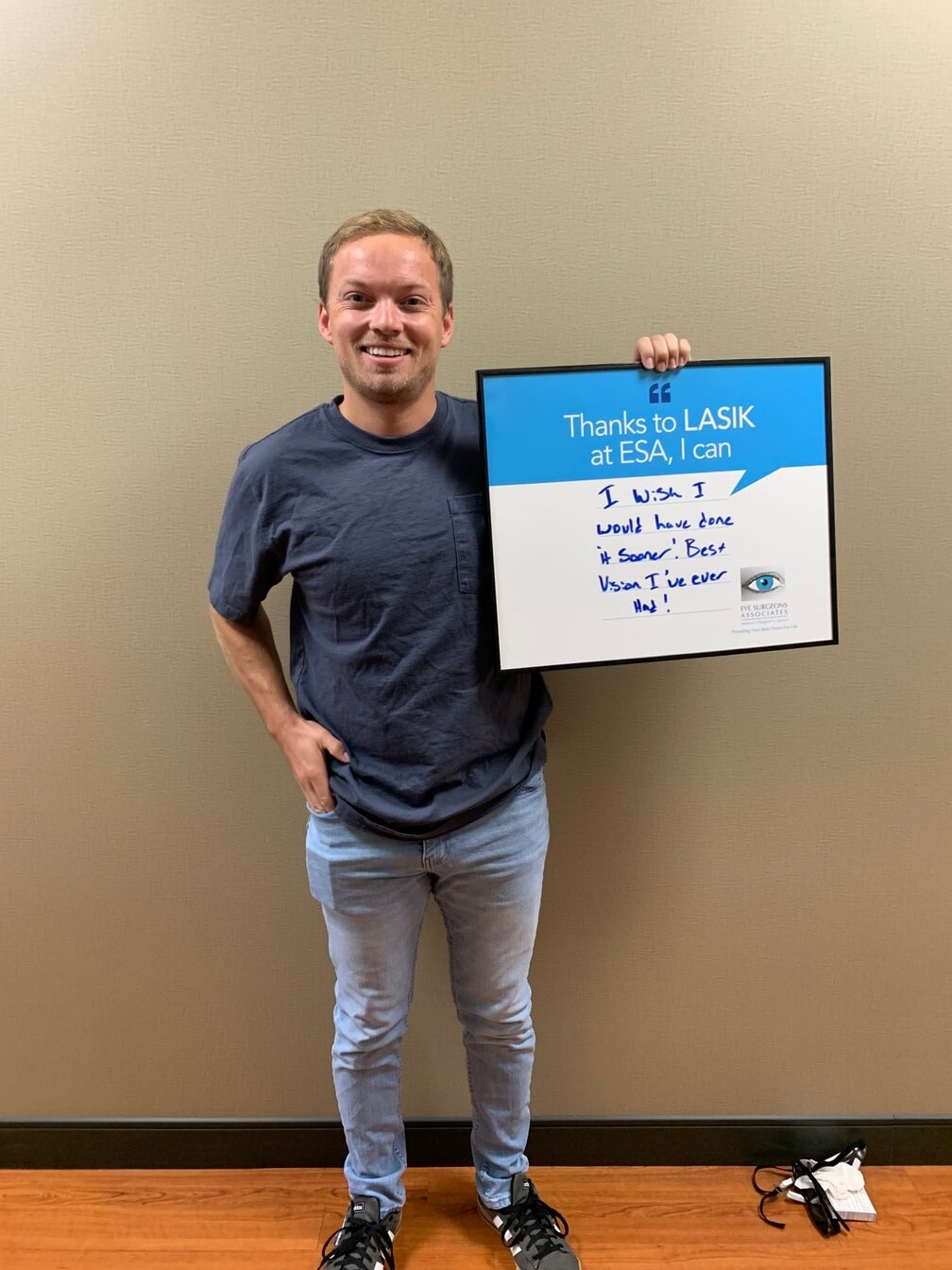
Carter
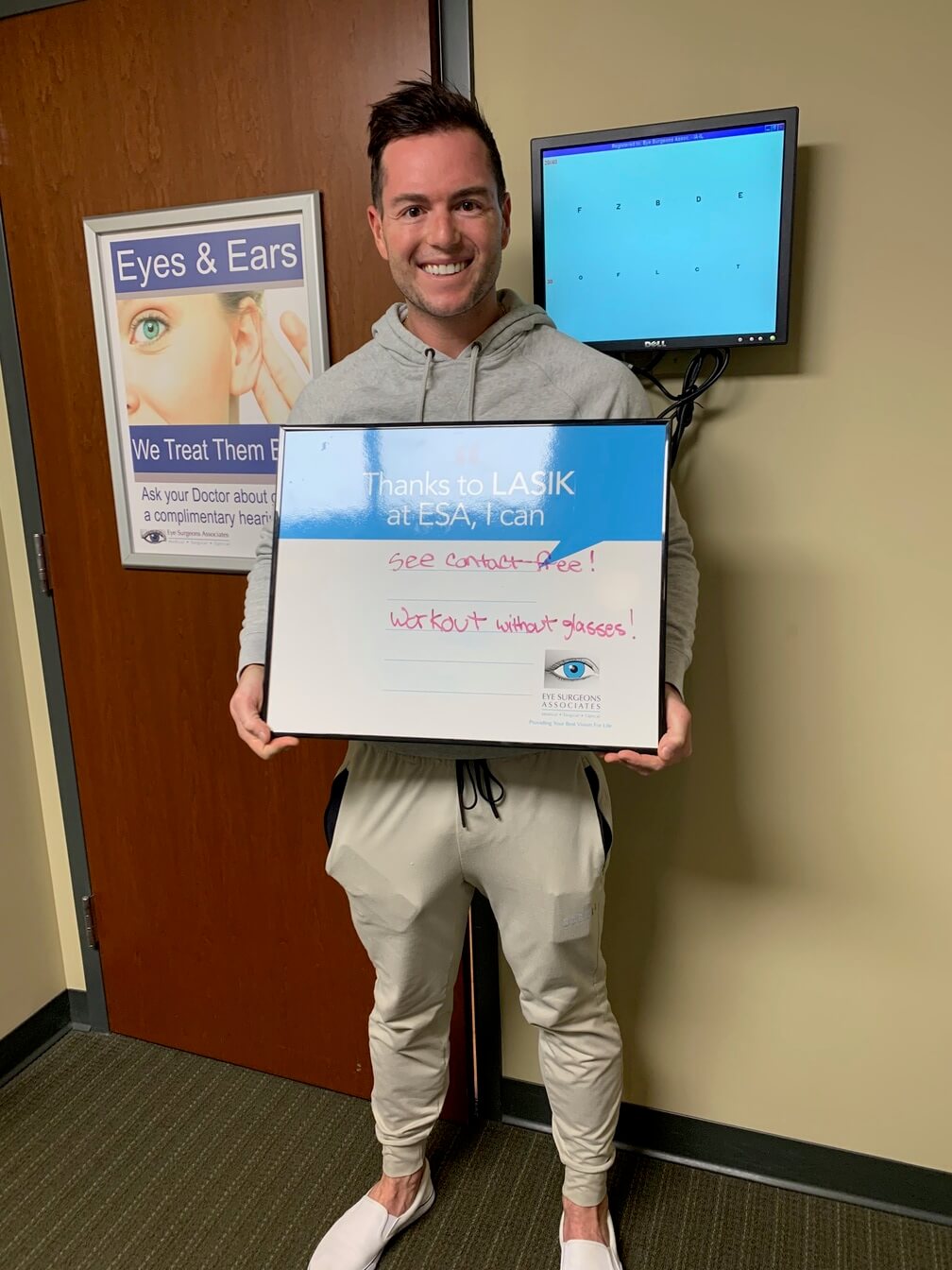
Carson
See what LASIK is like at ESA: Watch Patient Journey Video.
Why Choose Eye Surgeons Associates for LASIK?
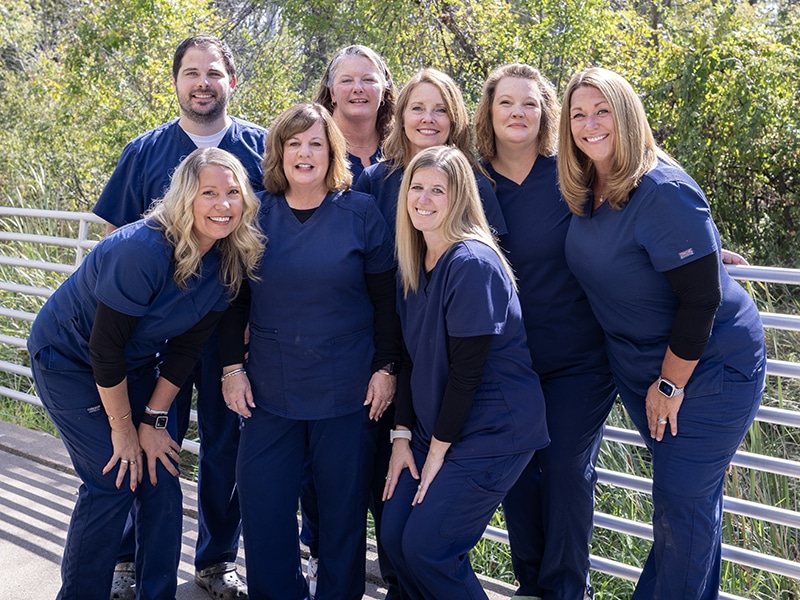
1. Experienced Team
We were the first practice in the Quad Cities to offer LASIK and have invested significantly in training and technology to be the area’s leading LASIK provider.
2. Advanced Technology
We use the WaveLight Refractive Suite, the world’s fastest and most precise LASIK system. More procedures are done on the WaveLight Refractive Suite than all other technologies combined.
It’s designed to deliver:
- Advanced treatments
- Great accuracy
- Proven reliability
- Excellent outcomes
The Wavelight FS200 femtosecond laser creates a precise and bladeless LASIK flap in as little as 6 seconds. The improved speed leads to a more comfortable experience for the patient.
The WaveLight EX500 excimer laser maintains the natural shape of the cornea, reducing glare and halos. This laser also includes an advanced eye-tracking system to improve patient safety.
The Wavelight FS200 and EX500 lasers comprise a single refractive suite, linked by a computer network and a swiveling patient bed. The swiveling patient bed makes for a smooth and comfortable experience on the day of surgery.
Market Scope. 2018 Annual US Refractive Survey Report: A Measurement of Perceptions of Ophthalmic Manufacturers, Practice Patterns, Product Market Share, and Surgeon Adoption Plans. Saint Louis, MO: Market Scope; December 2018.
Alcon data on file, 2018.
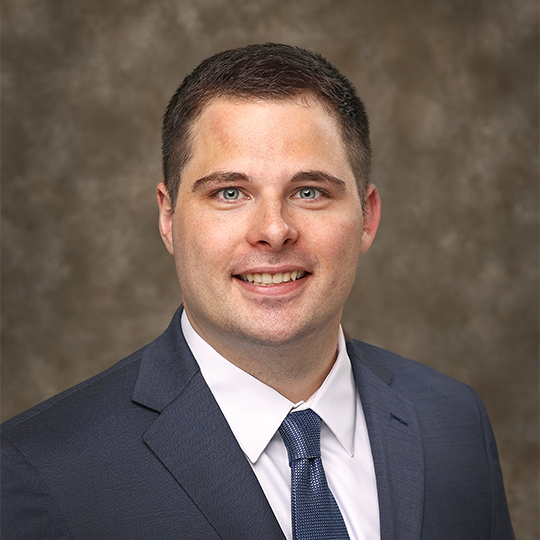
3. Fellowship Trained Surgeon
Our LASIK surgeon, Dr. Connor Davenport, completed additional specialized training (called a fellowship) in cornea and refractive surgery at Hoopes Vision, a premier vision correction center. Only a small percentage of eye doctors pursue this advanced level of training. Dr. Davenport believes so strongly in LASIK, he’s had the procedure himself!
What happens during LASIK Surgery?
After Your Procedure
- Most patients notice improved vision immediately.
- You will need someone to drive you home.
- We’ll give you protective goggles to wear.
- Avoid touching or rubbing your eyes and getting water in your eyes.
- Typically patients return to work the next day after their post-op visit.
- Use all medication prescribed by your doctor.
Risks
LASIK is a surgical procedure conducted on the corneal part of the eye, and it is crucial that patients are well educated on the potential benefits and risks of this procedure. As with any type of surgery, risks are involved. After your pre-operative evaluation, you will have a good idea about the risks and what they mean to your specific situation.
It is important to discuss any concern with your surgeon and weigh the risks and potential benefits. Each patient’s vision is different and several treatment options are available in order to give the best possible results. A patient information booklet is available with a complete listing of the indications, contraindications, complications, precautions and side effects.
This surgery is not suitable for all patients, individual results may vary and are not guaranteed.
IMPORTANT PRODUCT INFORMATION
WaveLight® Excimer Laser Systems
CAUTION: Federal (U.S.) law restricts the WaveLight® Excimer Laser Systems to sale by or on the order of a physician.
Additional Safety Information:
INDICATIONS: FDA has approved the WaveLight® Excimer Laser Systems for use in laser-assisted in situ keratomileusis (LASIK) treatments for nearsightedness (myopia), farsightedness (hyperopia), and astigmatism, including mixed astigmatism.
The WaveLight® Excimer Laser Systems are only indicated for use in patients who are 18 years of age or older (21 years of age or older for mixed astigmatism), who have documented evidence that their refraction did not change by more than 0.50 diopters during the year before their preoperative examination.
Alternatives to LASIK: LASIK is just one option for correcting your vision. Alternative options include eyeglasses, contact lenses, photorefractive keratectomy surgery (PRK), and other refractive surgeries. Be sure to talk to your doctor to find out if LASIK is appropriate for your condition.
ATTENTION: Ask your doctor for a copy of the current Patient Information Booklet for your procedure for a complete listing of the indications, contraindications, complications, warnings, precautions, side effects, and clinical study summaries.
ADVERSE EVENTS AND COMPLICATIONS: Common risks of LASIK procedures include:
- Developing dry eye syndrome, which can be severe;
- The possible need for glasses or contact lenses after surgery;
- Visual symptoms including halos, glare, starbursts, and double vision, which can be debilitating; and
- The loss of vision.
How much does LASIK cost?
Our Simple Pricing
$2,500 per eye includes everything you need:
- Free consultation (Due to equipment constraints, LASIK patients may not exceed 400 pounds)
- Pre-surgical evaluation includes comprehensive testing
- Surgery with Advanced WaveLight lasers
- All post-operative care for one year
- Enhancements for up to one year if needed ($350 charge will apply to all retreatments to correct monovision)
Special Discount: 10% off for military personnel and first responders (Police, EMTs, and Firefighters)
How does the cost of LASIK compare to glasses and contacts?
LASIK pays for itself in 5-7 years for most people!
When you add up the ongoing costs of glasses, contacts, solution, and eye exams over many years, LASIK becomes a smart financial choice – not to mention the freedom from daily hassles!
Why is LASIK at ESA worth it?
Experienced Team
ESA was the first practice in the Quad Cities to offer LASIK and has invested significantly in training and technology to be the area’s leading LASIK provider.
Advanced Technology
The WaveLight Refractive Suite combines two advanced lasers in a single system. It’s the fastest laser, resulting in a more comfortable patient experience, improved safety and excellent outcomes.
Fellowship Trained Surgeon
Our LASIK surgeon, Dr. Connor Davenport, completed additional specialized training (called a fellowship) in cornea and refractive surgery at Hoopes Vision, a premier vision correction center. Only a small percentage of eye doctors pursue this advanced level of training. Dr. Davenport believes so strongly in LASIK, he’s had the procedure himself!
Frequently Asked Questions
What result can I expect?
LASIK has proven overwhelmingly successful in reducing dependence on glasses and contact lenses. Clinical studies show that most LASIK patients (with mild to moderate prescriptions) have the potential to achieve 20/20 vision or near 20/20 vision. Generally, this means they no longer need or have reduced their dependence on glasses or contacts to drive, play sports, watch movies and TV, or participate in careers requiring excellent vision.
Are there any risks associated with LASIK?
Like any surgery, LASIK has some risks including dry eye, night glare, under or over-correction, and very rarely corneal flap complications, infection and loss of best-corrected vision. The risks of surgery should be discussed fully with the doctor to help you decide if LASIK is right for you. Additionally, proper post-operative care helps to identify and address any potential healing complications.
Does the LASIK hurt?
There is almost no pain involved with LASIK, but many patients find the procedure to be slightly uncomfortable. We use numbing eye drops and offer mild sedation to help you relax. After the procedure, you’ll feel a slight irritation, like you have a grain of sand in your eye for a few hours, but most patients are very comfortable shortly thereafter.
Dr. Davenport explains in this short video.
What is the recovery process like?
Watch Dr. Davenport Explain Recovery Video.
How long will my LASIK last?
LASIK sculpts the cornea, the front part of the eye. The cornea doesn’t change much over the years, although there is a less than 5% chance you will need an enhancement/touch up. LASIK, however, does not stop the natural/biological changes as we age from occurring, like cataracts or presbyopia. These changes will happen with or without LASIK and you may once again need some glasses correction to see your best.
What if I am Not a LASIK Candidate?
Don’t worry! We offer several other vision correction options.
Dr. Davenport explains options in this Video.
PRK Surgery
Photorefractive keratectomy (PRK) is similar to LASIK, but there is no corneal flap created. The laser beam is applied directly to the surface of the eye to reshape the cornea. PRK is used for patients with thin corneas or other corneal irregularities. Initial healing takes longer than LASIK, but the long-term results are the same.
PRK Story from Caroline, Davenport, IA
Caroline relied on contacts and glasses for years, requiring them especially for driving. From age 19, she inquired about LASIK at every annual eye exam. Though initially nervous, she finally scheduled a consultation after speaking with a doctor at ESA.
During her evaluation, Caroline learned that while she wasn’t a candidate for LASIK, she was eligible for PRK—a similar procedure that delivers the same results but requires a longer healing period. She decided to proceed with the surgery, finding the process straightforward. The calming medication was particularly helpful, as she was somewhat anxious about having things near her face.
“They did a quick exam, then took me to the treatment room,” Caroline explained. “I laid down, and it seemed like just five minutes later, it was done.”
She described her recovery: “The first two days, I slept as much as possible and experienced some soreness. At my one-day post-op appointment, they provided numbing drops, which helped significantly. By day three, the pain had subsided. After a week, I could drive and return to work, though focusing took some adjustment as I got used to my improved vision. By week two, everything felt normal. At one month, I was nearly 20/20, and by six months, I had achieved full 20/20 vision.”
Regarding long-term effects, Caroline notes, “They warned me there may be lingering dryness, but I only reach for lubricating drops about once a week. It was so, so worth it! It is amazing to wake up and Immediately see the world without fumbling for contacts!”
EVO ICL Surgery
For patients with high nearsightedness, it can safely and effectively treat larger prescriptions. EVO ICL surgery involves placing a small, thin, biocompatible lens inside your eye behind the iris and in front of the natural crystalline lens. The lenses are customized based on your pre-operative measurements to provide excellent vision.
Performed in our outpatient surgery center, it usually takes less than one hour to complete. Before the procedure we will administer a systemic relaxing medication as well as a local anesthetic to ensure you are comfortable throughout the surgery. During the procedure, the surgeon makes a small incision in your cornea and then places the EVO ICL lens inside your eye. The surgeon will then ensure it is properly positioned and secure.
Most patients notice improved vision immediately and it continues to sharpen over the coming days. We recommend avoiding strenuous activity for the first week. We will carefully monitor healing at follow up appointments.
Dillon’s ICL Story Bettendorf, IA
I’ve worn contact lenses since I was 11 years old, with a significant -7 prescription. My distance vision was so poor that I couldn’t function without correction – whether reading a book two feet away or driving, I needed either contacts or glasses. As a member of the military, I strongly preferred contacts, especially for activities like weapons qualification on the range. However, my eyes had grown increasingly intolerant of contact lenses, and glasses weren’t ideal for my work.
Last summer, I decided to explore LASIK as a solution. While I was initially approved during the free consultation, Dr. Davenport raised some important concerns during my surgical screening. My corneas were just thick enough for LASIK, not leaving a lot of excess tissue after the procedure. He worried about potential long-term complications from corneal weakening. That’s when he introduced me to EVO ICLs as an alternative.
Dr. Davenport explained that ICLs would provide the same immediate results as LASIK, but a better option for me with thinner corneas and a higher prescription. Basically, they implant a custom prescription lens. Though this was a newer procedure for the surgery center, Dr. Davenport had experience performing it. After about six months of preparation at the surgery center, I was scheduled for surgery following detailed measurements.
The pre-operative process took about an hour and a half. I received dilation drops, numbing drops, and IV relaxation medication. My only task was to look straight ahead during the procedure. I experienced some minor pressure and discomfort with the first eye, but after I mentioned this, they adjusted their approach, and I felt nothing during the second eye. While each eye required about 15 minutes of preparation, the actual lens implantation took just a minute per eye. Despite being somewhat squeamish, especially about my eyes, the surgical team made me feel completely at ease.
The results were immediate and remarkable – I could see clearly right away! At my post-op visit the next day, I had 20/20 vision, and by my one-week post-op appointment, my vision had improved to 20/15. I can’t even feel the lenses in my eyes. I would absolutely recommend this procedure to anyone considering vision correction!
Refractive Lens Exchange (RLE) also known as clear lens extraction (CLE) is an option for people over 40 who are farsighted or developing presbyopia (difficulty reading).
We replace the natural lens with an artificial one, similar to cataract surgery, but before cataracts develop.
If you are interested in this procedure, please contact our Refractive Surgery Coordinator for more information at 563-323-9999 or LASIKinquiries@eyesurgeonspc.com.
This is surgery and risks exist. Your doctor and their team will counsel you regarding risks specific to your eye and your general health.
Not sure which option is best for you? Schedule your free consultation or take our self-test.
LASIK Self-Test
Get started on your journey to new vision.
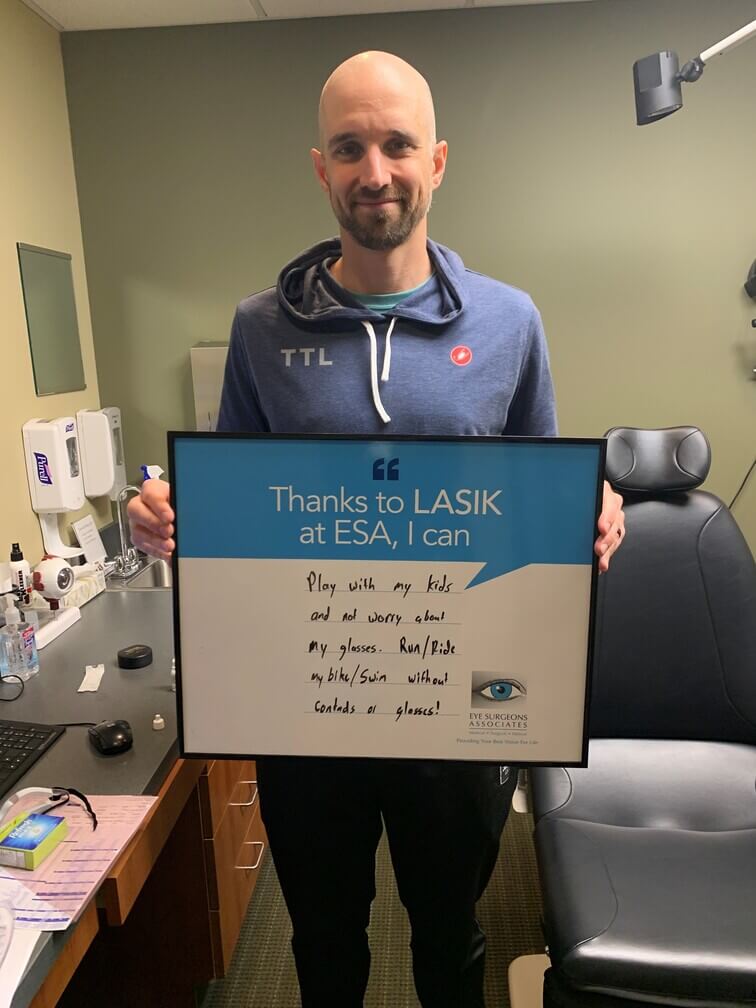
Justin
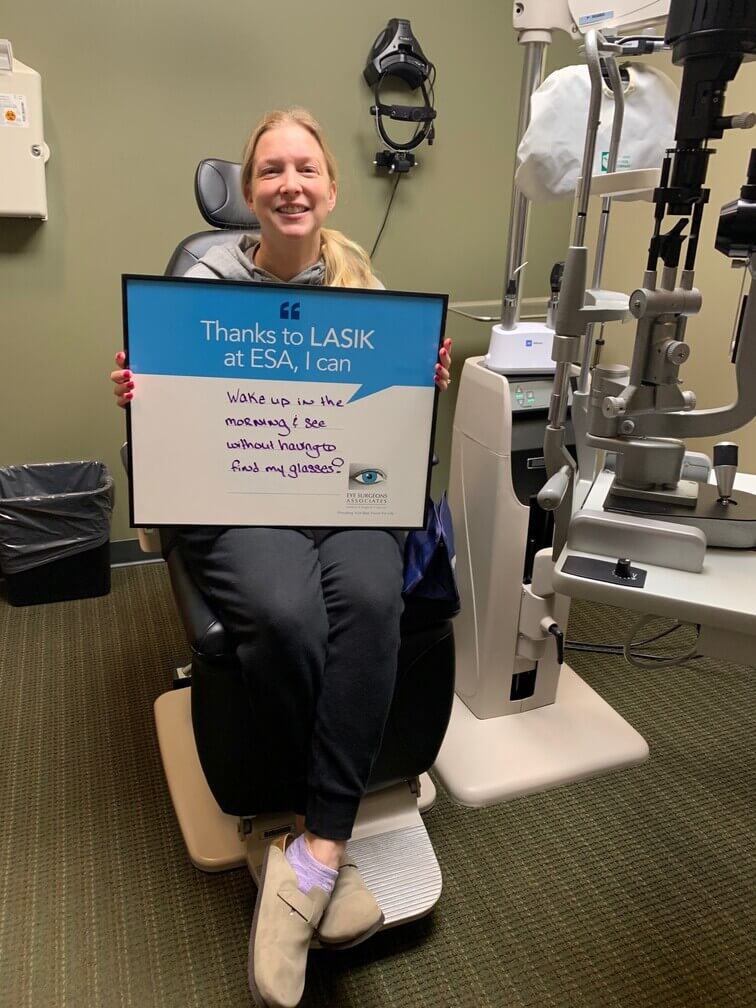
Casey
